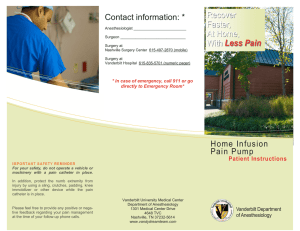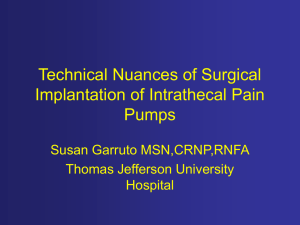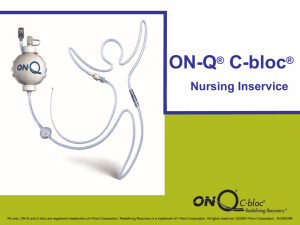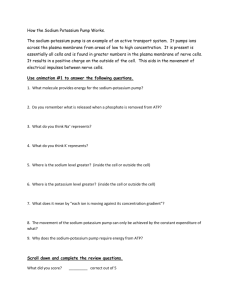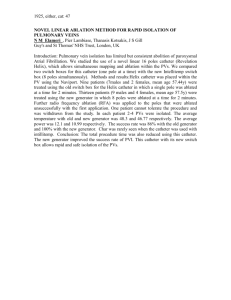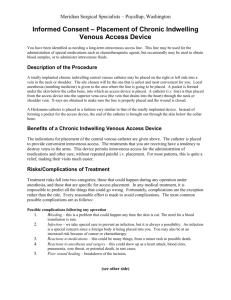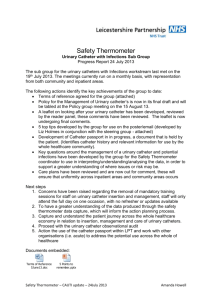How to Care for a Peripheral Nerve Block Catheter
advertisement
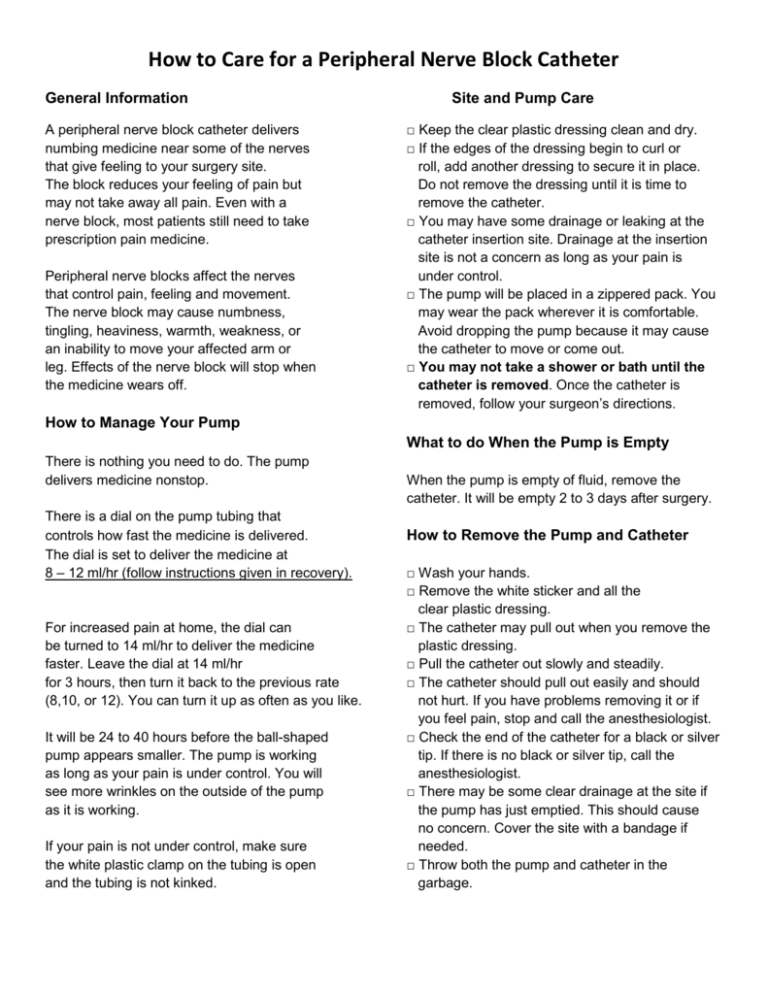
How to Care for a Peripheral Nerve Block Catheter General Information A peripheral nerve block catheter delivers numbing medicine near some of the nerves that give feeling to your surgery site. The block reduces your feeling of pain but may not take away all pain. Even with a nerve block, most patients still need to take prescription pain medicine. Peripheral nerve blocks affect the nerves that control pain, feeling and movement. The nerve block may cause numbness, tingling, heaviness, warmth, weakness, or an inability to move your affected arm or leg. Effects of the nerve block will stop when the medicine wears off. Site and Pump Care □ Keep the clear plastic dressing clean and dry. □ If the edges of the dressing begin to curl or roll, add another dressing to secure it in place. Do not remove the dressing until it is time to remove the catheter. □ You may have some drainage or leaking at the catheter insertion site. Drainage at the insertion site is not a concern as long as your pain is under control. □ The pump will be placed in a zippered pack. You may wear the pack wherever it is comfortable. Avoid dropping the pump because it may cause the catheter to move or come out. □ You may not take a shower or bath until the catheter is removed. Once the catheter is removed, follow your surgeon’s directions. How to Manage Your Pump What to do When the Pump is Empty There is nothing you need to do. The pump delivers medicine nonstop. There is a dial on the pump tubing that controls how fast the medicine is delivered. The dial is set to deliver the medicine at 8 – 12 ml/hr (follow instructions given in recovery). For increased pain at home, the dial can be turned to 14 ml/hr to deliver the medicine faster. Leave the dial at 14 ml/hr for 3 hours, then turn it back to the previous rate (8,10, or 12). You can turn it up as often as you like. It will be 24 to 40 hours before the ball-shaped pump appears smaller. The pump is working as long as your pain is under control. You will see more wrinkles on the outside of the pump as it is working. If your pain is not under control, make sure the white plastic clamp on the tubing is open and the tubing is not kinked. When the pump is empty of fluid, remove the catheter. It will be empty 2 to 3 days after surgery. How to Remove the Pump and Catheter □ Wash your hands. □ Remove the white sticker and all the clear plastic dressing. □ The catheter may pull out when you remove the plastic dressing. □ Pull the catheter out slowly and steadily. □ The catheter should pull out easily and should not hurt. If you have problems removing it or if you feel pain, stop and call the anesthesiologist. □ Check the end of the catheter for a black or silver tip. If there is no black or silver tip, call the anesthesiologist. □ There may be some clear drainage at the site if the pump has just emptied. This should cause no concern. Cover the site with a bandage if needed. □ Throw both the pump and catheter in the garbage. Precautions Symptoms You may have some loss of feeling or loss of control at or around your affected arm or leg. Do not drive or operate heavy machines and do not put any weight on your affected arm or leg until your surgeon says it is OK. If you had shoulder surgery, you may have the following non-concerning symptoms on your surgical side: □ Red eye □ Unequal pupils □ Droopy eye □ Hoarse voice □ Mild shortness of breath when lying flat; Resting and sleeping upright helps reduce this. General Pain Information It is normal to have more feeling to your surgery site the day after surgery. Stronger numbing medication is injected near the nerves on the day of surgery and will last 8 to 24 hours after surgery. Be sure to take your pain pill(s) before you go to bed on your first night home. You should take your pain pill(s) as prescribed by your surgeon in addition to having this pump. If you have questions or concerns regarding your prescription pain medication(s), call your surgeon . These symptoms may come and go and will be less noticeable or go away the day after surgery. When to Call the Anesthesiologist Call the anesthesiologist if you have any of the following: □ Drowsiness □ Lightheadedness, dizziness and/or feeling disoriented □ Signs of infection at the catheter site: - tenderness - redness - swelling -drainage at the catheter site □ Pain not controlled by the pump and your pain pills □ Anxiety □ Difficulty breathing □ Numbness around your mouth □ Metallic taste in your mouth □ Blurred vision □ Ringing in your ears (tinnitus) □ If the catheter comes out or pump become disconnected □ Any questions or concerns Whom to Call for Help Orthopaedic Institute Surgery Center Call 952-914-8406 during normal business hours Monday through Friday. If you reach the voicemail, leave a message and a nurse will call you back as soon as possible. We do have varying operating hours. If you do not receive a call back within an hour, please call the number below. Abbott Northwestern Hospital Call 612-654-4291 for evenings, nights, weekends and major holidays. Listen to the message, enter your phone number and hang up. You will receive a call back.
